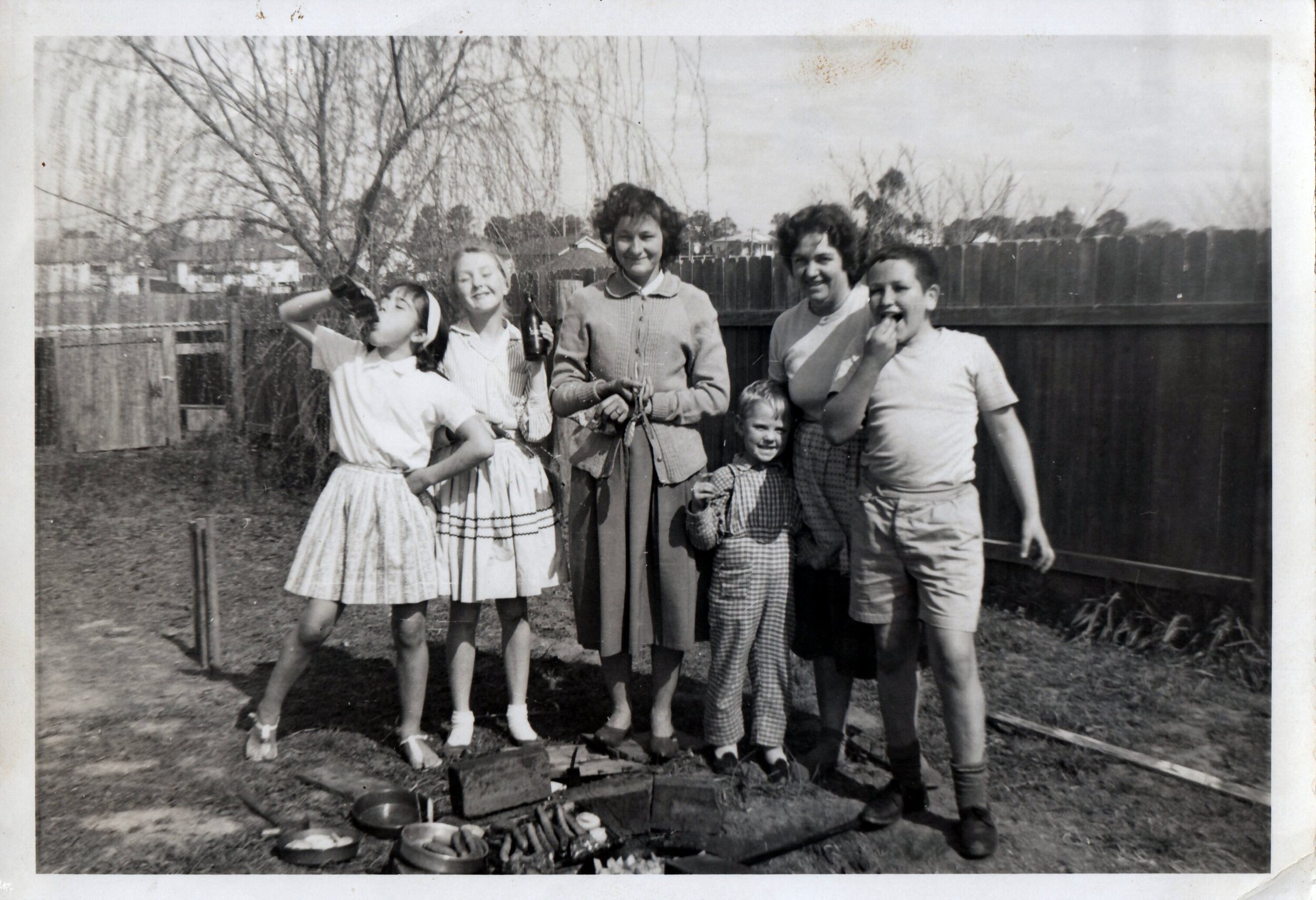The magic of photography begins for me with the way the camera focuses my attention so intensely that time seems to stands still. My favourite subjects of my earliest photographs were my family, neighbours, cars, toys and pets.
Our father bought our first family car when he got tired of pedalling his bicycle to work and yielded to the post-war social and economic pressures of the early 1950s to modernise. He trawled through pages and pages of the massive Classified Section of the Saturday edition of The Sydney Morning Herald circling cars for sale he could afford. It was maroon with matching leather bench seats, gear shift on the floor, running boards and a crank handle which was slotted into a hole in the front bumper bar and cranked manually when the starter motor failed or the battery was flat.
Home was the drop-slab cottage built by our great great grandfather Gottlieb Mangold, who was born in Germany, and his wife Eva Fredericka Mangold (born Mack). The lattice towards the back of the house lined with a canvas blind was known as ‘the passage’ - my bedroom. The little window next to it opened to my first sister’s bedroom. My mother, sister and I sat at that window at night looking down Garfield Road, Marsden Park, hoping to see the lights of the car bringing my father home from the pub in Riverstone. The original central drop-slab core of the cottage is now in the Australiana Pioneer Village, Wilberforce.
My Instagram handle @kodak127 dates from this time. My first camera was a small plastic fixed focal length and single aperture and shutter speed rangefinder ‘Made in Japan’ using Kodak 127 black and white film rolled tightly in a sheath of light-proof paper on a metal spool. It was packed in a beautiful little yellow rectangular box with ‘Kodak’ printed boldly in red along its length. Inside the pack was a table of instructions illustrated with graphics showing distances to stand for portraits and landscapes, always with the sun behind you.
Our family’s first car was this Vauxhall bought privately second hand unregistered by my father, this model was made 1937 - 1947.
Frederick Mangold ‘the cattle rustler’ our father’s father with my baby brother Steven and Kerry my first little sister, now all gone.
In 1989 Treasurer Paul Keating’s ‘recession we had to have’ brought on an unexpected sea change for me and my family in Noosa and visits to Eumundi Markets in its infancy. The following year in need of a new challenge I began searching for a subject suitable for a photography book. I wanted it to be a substantial project.
Eumundi Markets grew up in and around public spaces in the town when it was bypassed by the Bruce Highway. It was the brainchild of two local women, Christa Barton and Gail Perry-Somers, the founders who saw it as a creative way to tackle high levels of youth unemployment in the area by giving them something to do. The clearly fenced boundaries, predictability of the spaces allocated to stallholders, the routine and rhythm of this regular event every Saturday, gave me my subject.
The same factors in another weekly community market connected to social causes subsequently led me to another book photography book documenting Paddington Markets when my short lived sea change at Noosa Heads saw me back in Sydney. In 1992 I prowled the grounds of Paddington Public School and Paddington Uniting Church photographing staff, and stallholders setting up, meeting, greeting and selling to customers, and packing up, almost every Saturday.
The frame of my Nikon and Widelux film cameras’ viewfinders; the edges and what happened inside them excited me to the point of setting myself the extra challenge of shooting every photograph full frame with the Eumundi Markets, Paddington Markets and BHP Wiremill books. Whenever possible my photographs are generally full frame. I like people who are looking at them to see exactly what I saw through the camera.
LINKS
The Australiana Pioneer Village
Riverstone Historical Society


